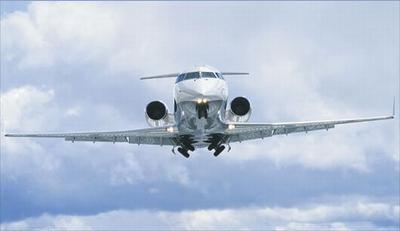Says Pilots Committed A Number Of Errors; Airline Failed To
Properly Train Them
 The National Transportation Safety
Board determined Tuesday a laundry list of causes led to the
October 14, 2004 "joyride" accident of
Pinnacle Airlines flight 3701.
The National Transportation Safety
Board determined Tuesday a laundry list of causes led to the
October 14, 2004 "joyride" accident of
Pinnacle Airlines flight 3701.
According to the NTSB, the probable causes of the crash -- which
killed the two pilots ferrying the aircraft -- were as follows:
- the pilots' unprofessional behavior, deviation from standard
operating procedures, and poor airmanship, which resulted in an
in-flight emergency from which they were unable to recover, in part
because of the pilots' inadequate training
- the pilots' failure to prepare for an emergency landing in a
timely manner, including communicating with air traffic controllers
immediately after the emergency about the loss of both engines and
the availability of landing sites
- and the pilots' failure to achieve and maintain the target
airspeed in the double engine failure checklist, which caused the
engine cores to stop rotating and resulted in the core lock engine
condition.
Contributing to the cause of the accident were the engine core
lock condition, which prevented at least one engine from being
restarted, and the airplane flight manuals that did not communicate
to pilots the importance of maintaining a minimum airspeed to keep
the engine cores rotating.
 "This accident was caused
by the pilots' inappropriate and unprofessional behavior," said
NTSB Chairman Mark V. Rosenker (right). "Simply adhering to
standard operating procedures and correctly implementing emergency
procedures would have gone a long way to adverting this tragic
accident."
"This accident was caused
by the pilots' inappropriate and unprofessional behavior," said
NTSB Chairman Mark V. Rosenker (right). "Simply adhering to
standard operating procedures and correctly implementing emergency
procedures would have gone a long way to adverting this tragic
accident."
On October 14, 2004, a Bombardier CL-600-2B19 (N8396A) operated
by Pinnacle Airlines (dba Northwest Airlink) departed Little Rock
National Airport about 9:21 pm CDT en route to Minneapolis-St.
Paul, MN for a repositioning flight.
The flight plan indicated the planned cruise altitude was 33,000
feet. At about 9:26 pm, the airplane was at an altitude of about
14,000 feet and the flight crew engaged the autopilot.
A few seconds later, the captain requested and received
clearance to climb to the CRJ-200's maximum operating altitude of
41,000 feet. After the aircraft reached FL410, the airplane entered
several stalls, and shortly thereafter had double engine
failure.
The crew declared an emergency with the tower, informing them of
an engine failure. However, they failed to inform the tower that
both engines had failed while they made several unsuccessful
attempts to restart the engines.
The crew also continued to try to restart the engines after the
controller asked if they wanted to land.
The flight crew attempted to make an emergency landing at the
Jefferson City, Missouri airport but crashed in a residential area
about three miles south of the airport. The airplane was destroyed
by impact forces and a post crash fire.
The two crewmembers were fatally injured. There were no
passengers on board and no injuries on the ground.
The Safety Board issued eleven recommendations to the Federal
Aviation Administration, as a result of this accident, dealing with
pilots training and high altitude stall recovery techniques.

As Aero-News reported, in
November 2006 the Board also issued a series of urgent safety
recommendations, stating the FAA should require operators of CRJs
equipped with CF34-1 or CF34-3 engines be well-versed in compressor
stall, engine shutdown, and inflight restart procedures.
 Unfortunate... ANN/SportPlane Resource Guide Adds To Cautionary Advisories
Unfortunate... ANN/SportPlane Resource Guide Adds To Cautionary Advisories ANN FAQ: Turn On Post Notifications
ANN FAQ: Turn On Post Notifications ANN's Daily Aero-Term (04.29.24): Visual Approach Slope Indicator (VASI)
ANN's Daily Aero-Term (04.29.24): Visual Approach Slope Indicator (VASI) ANN's Daily Aero-Term (04.28.24): Airport Marking Aids
ANN's Daily Aero-Term (04.28.24): Airport Marking Aids ANN's Daily Aero-Linx (04.28.24)
ANN's Daily Aero-Linx (04.28.24)





